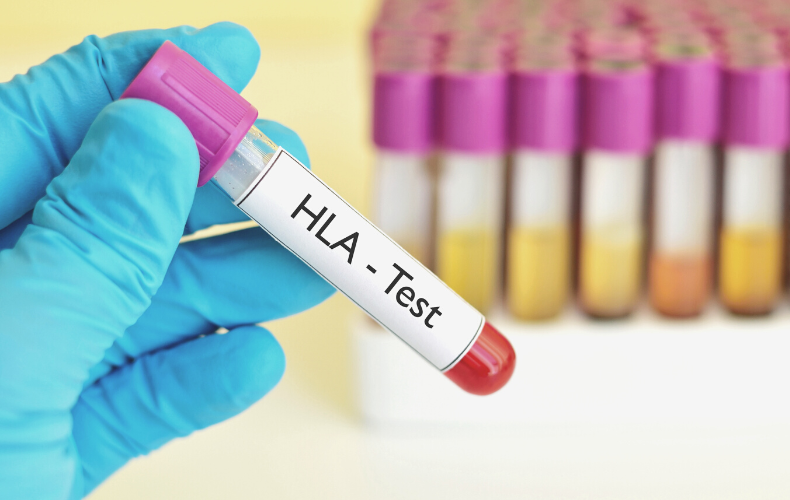
HLA matching is an important process that has to be done before a cord blood transplant can be performed. In this article, we’ll explain what HLA matching means and why it is a necessary step before a stem cell treatment.
What is the Human Leukocyte Antigen (HLA) System?
The human leukocyte antigen (HLA) system helps the immune system differentiate between natural cells and potentially dangerous foreign cells. It works by encoding major histocompatibility complex (MHC) proteins onto the surface of cells. This allows the body to then compare the proteins on the surface of each cell, checking if any cells are foreign and potentially unsafe. Once a foreign cell is identified, the immune system will attack that cell. The HLA system helps the body fight all kinds of foreign invaders including bacteria and viruses.
Classes of MHC Proteins
There are three groups of genes in the MHC complex that create proteins on the surface of cells — class I, class II, and class III. These genes are responsible for creating many of the different HLA protein molecules that sit on the surface of cells.
- MHC Class I Genes (HLA-A, HLA-B, and HLA-C) – The proteins produced by these genes are present on the surface of virtually every cell in the human body. Each protein is bound to protein fragments (peptides) on a cell. MHC class I proteins shares information on these peptides with the immune system. This helps the immune system identify if the cell is natural or foreign to the body.
- MHC Class II Genes (HLA-DPA1, HLA-DPB1, HLA-DQA1, HLA-DQB1, HLA-DRA, and HLA-DRB1) – These genes provide instructions on how to make proteins that sit on the surface of certain immune cells.
- MHC Class III Genes – The proteins produced by these genes are involved in triggering inflammation and other immune system activities.
What is HLA Matching?
The combinations of HLA protein molecules that are encoded onto the surface of cells are unique to each person. For a safe cord blood transplant, the donor and recipient must have the same or a similar “HLA Type”. If they don’t, the transplanted cells will be rejected by the immune system.
HLA matching is done by obtaining a sample of recipient’s and donor’s blood. The samples will be tested to determine the HLA protein molecules that are present and the patient’s HLA type.
There are 6 HLA types that are important for transplants. For bone marrow stem cell transplant, all 6 must be a match. However, cord blood transplant can work with 4 out of 6 match (67%) match, because the donor cells are less mature and less likely to trigger an immune system reaction.
What is the likelihood of HLA match with family members?
The type of HLA protein molecules that a person has is determined by their parents. This is why it is common for parents and children to have a close match. If a child has the same HLA molecules as both parents, they are considered to have a “HLA identical match”. When it comes to siblings with the same parents, a person will have a 25% chance of having a full match.
The importance of HLA matching for cord blood transplant
Failing to have at least a 4 out of 6 match when performing cord blood transplant can lead to a variety of complications. One of the most serious complications is graft-vs-host disease (GvHD), where the transplanted cells believe that the recipient’s cells are foreign and begins to attack them. This condition carries some significant side effects including infections, ulcers, rashes, and pain.
New to cord blood banking? Download our FREE Cord Blood Info Pack now for more information or speak to one of our specialists at 04-3116613.
Sources:
https://ghr.nlm.nih.gov/primer/genefamily/hla
https://www.bonemarrowtest.com/information/frequently-asked-questions-patients.html

